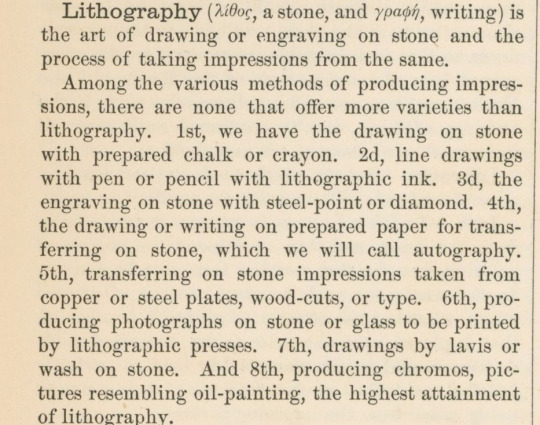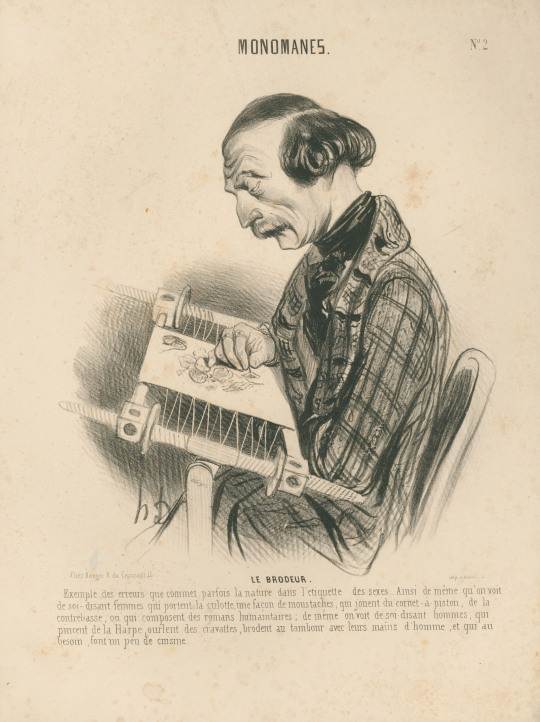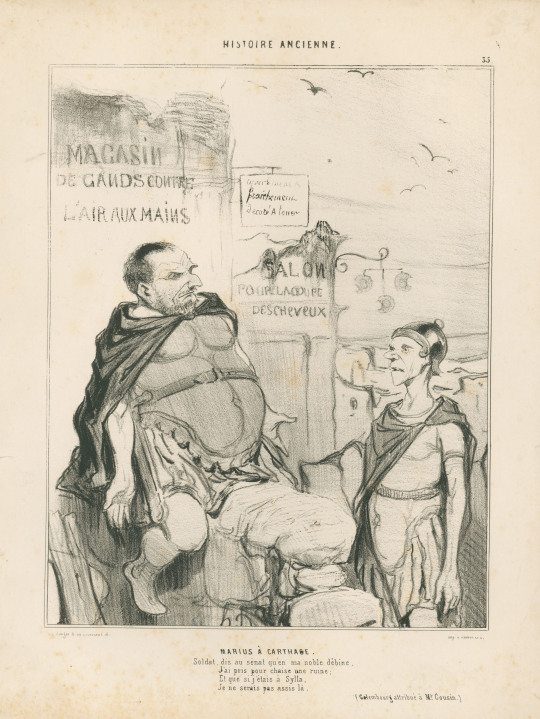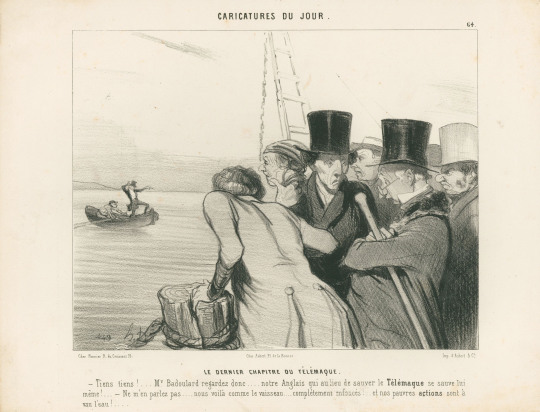#planographic printing
Text
Milestone Monday





On this day, November 6, 1771, Alois Senefelder (1771-1834) inventor of lithography was born. The son of an actor and tasked with supporting his mother and siblings after his father’s death, Senefelder began his own acting career at age twenty and extended his occupational talents into playwriting. Unable to afford to publish a new play he’d written, Senefelder experimented with what he called “stone printing” in the 1790s, etching acid resistant ink onto limestone and subsequently inventing the first planographic process in printing. Senefelder perfected the chemical process and designed a special printing press with the help of the André family and within five years lithography was being used as a cheap form of creating reproductions by publishers and in mapmaking by land surveying offices throughout Europe.
By the early 1800’s Senefelder and his contemporaries were thinking of ways to introduce color to lithography. Senefelder outlined his ideas on chromolithography in his 1818 book A Complete Course of Lithography, but it was Godefroy Engelmann of France who was awarded the patent for it in 1837.
In celebration of Senefelder’s birthday and all that he contributed to the printing world; we’re looking at the American Encyclopedia of Printing published in 1871 by Menamin & Ringwalt of Philadelphia. Included within the section on lithography is a storied portrait of Senefelder surrounded by his tools and accomplishments. The lithographic portrait was printed by Duval & Hunter, lithographers and chromo publishers out of Philadelphia.
It wasn’t long before artists saw the appeal of lithographs and began taking advantage of the new printing technique. Lithography was far more approachable than other printing methods of the time like engraving, because artists could draw directly on the stone with familiar tools, such as pens and crayons. They did not need to master a new medium or skill to create highly accurate prints with deep textural qualities.
Among the artists of the 1800’s diving into lithography, Honoré-Victorin Daumier (1808-1879) excelled in the medium. Daumier was a prolific French artist who created more than 4,000 lithographs in addition to his many sculptures, paintings, drawings, and wood engravings. His specialty was satirical social caricatures of Parisian life where he effortlessly blended artistry, social commentary, and humor as showcased in the following lithographs held within our collection. The prints were published in 1840 by La maison Aubert of Paris.





View other posts from the American Encyclopedia of Printing.
View more posts with lithographs.
View more Milestone Monday posts.
– Jenna, Special Collections Graduate Intern
#Milestone Monday#milestones#alois senefelder#lithography#planographic printing#J. Luther Ringwalt#American Encyclopedia of Printing#Menamin & Ringwalt\#Duval & Hunter#Honoré-Victorin Daumier#Daumier#La maison Aubert#lithographs#inventions
18 notes
·
View notes
Photo

‘Haunting’ (French, 1893–94).
Lithograph.
Metropolitan Museum of Art Terms and Conditions
Internet Archive Python library 0.5.1
49 notes
·
View notes
Text

Stuart Davis
Untitled from the portfolio 'Ten Works/Ten Painters'
planographic print
1964
28.3 x 35.9 cm
Amon Carter Museum of American Art, Fort Worth, Texas, Gift of Edith G. Halpert
148 notes
·
View notes
Text

Atsuko Tanaka, Untitled, (planographic print in black on ivory wove paper), 1963 [The Art Institute of Chicago, Chicago, IL. © Atsuko Tanaka]
52 notes
·
View notes
Photo

Henryk Płóciennik - Fishing IV, (zincography, 1967).
Zincography was a planographic printing process that used zinc plates. Alois Senefelder first mentioned zinc's lithographic use as a substitute for Bavarian limestone in his 1801 English patent specifications. In 1834, Federico Lacelli patented a zincographic printing process, producing large maps called géoramas.
https://en.wikipedia.org/wiki/Zincography
44 notes
·
View notes
Text
Photolitho...
Week 7 AP:ED - Betty doing her thing...
Today was all about photolithography. Having done stone lithography and Mokulito I had a sound understanding of the process. However it's always great to have a refresher session!
Lithography is a planographic process based upon the fact that grease and water do not mix. In Photo Plate Lithography, the images are drawn and painted onto drafting film or printed digitally on to acetate; the plate surface is exposed to UV light (Betty) and developed to create hydrophilic areas.
The image can be on paper or acetate however needs to have variation of tone to create a contrasting image. The adjustments can be done on photoshop or any photo editing software.
What is needed is a photo litho plate, photo positive litho developer and Hunterpress multi gum.
Once UV light develops the plate, it is put into the developer for a few minutes and then taken out to dry. It's then covered with multi gum.
Relief oil based ink is needed for this technique to be successful.
Photolithography is another printmaking technique that can add interest to a developing image.










3 notes
·
View notes
Photo

Lithographer at work
“Lithography (from Ancient Greek λίθος, lithos 'stone', and γράφειν, graphein 'to write') is a planographic method of printing originally based on the immiscibility of oil and water. The printing is from a stone (lithographic limestone) or a metal plate with a smooth surface.” - Wikipedia
5 notes
·
View notes
Text





From Leicester Print Workshop @leicesterprintworkshop (Instagram) 🤍
➡️ https://linktr.ee/LeicesterPrintWorkshop ⬅️🤍
The afternoon sessions of Introduction to Print are fully booked but we have a few spaces left on the evening sessions running from Wednesday 4th September to Wednesday 9th October.
Intro to print is a fantastic way to explore a variety of popular techniques and get an idea of what suits your printmaking palette.
Each session is taught by a different specialist providing you with an opportunity to experiment with intaglio, relief and planographic techniques and work with screenprinting, monoprint, lino, drypoint, etching and wooden type.
This course is perfect for beginners, those who wish to refresh their understanding or established printmakers who simply want an enjoyable challenge.
Course Structure.
Visit our website to book your place! - Link in bio
#introtoprint #printmaking #leicester #printcourses #print #learnsomethingnew #screenprinting #linocut #drypoint #etching #monoprint #letterpress #artisttutors #haveago #joinus #eveningcourse
🌞🌞🌞🌞
0 notes
Text
Go-kart racing is a popular recreational activity enjoyed by people of all ages, but did you know that go-karts could also hold the key to peace with space aliens? It may sound far-fetched, but scientists and experts in the fields of planetary exploration and extraterrestrial life believe that go-karts are a critical element in establishing peaceful relations with potential alien species.
So why exactly are go-karts planographic for peace with aliens? Well, it all goes back to the basics of lithography, the process used in printing that allows for images to be reproduced on a flat surface. This technique is also utilized in the design and construction of go-karts, which are essentially flat vehicles with no significant features or protruding parts.
This flatness makes go-karts extremely versatile and adaptable, much like the lithographic process itself. Just as a printmaker can create numerous images from a single flat surface, go-karts can be easily customized and modified for various purposes. This flexibility is crucial in establishing peaceful communication with alien species, as it allows for quick and easy adaptation to unfamiliar surroundings.
Additionally, go-karts are compact and lightweight, making them ideal for space travel. Just like how astronauts use specially designed vehicles to navigate the complexities of space, go-karts can serve a similar purpose in communicating and exploring unknown worlds. With their small size and maneuverability, go-karts can navigate through different terrains and reach remote locations, making them ideal for peaceful interactions with aliens.
Furthermore, go-karts are also relatively low-cost and easy to manufacture, making them accessible to a wide range of people. This inclusivity is essential in promoting peaceful relations with aliens, as it allows for equal access and participation in potential interplanetary activities.
But it's not just the physical properties of go-karts that make them planographic for peace with aliens. It's also the spirit of go-kart racing itself. Go-kart racing is a recreational activity that is rooted in friendly competition and camaraderie. This competitive but good-natured spirit could be vital in bridging the gap between humans and aliens, as it promotes teamwork and cooperation.
In the same way that go-kart racers work together to navigate the track and achieve their goals, humans and aliens could potentially work together to advance towards a common goal of peace and understanding.
In conclusion, go-karts may seem like just another fun activity for humans, but they hold significant potential in paving the way for peaceful relations with aliens. Their planographic nature, adaptability, and spirit of comradery make them ideal vehicles for interplanetary communication and cooperation. Who knows, the next time you hop into a go-kart, you may be unknowingly preparing yourself for potential interactions with our extraterrestrial neighbors.
0 notes
Text
New artists/agencies
Rolf Harder


Here are some prints that I looked at that Harder has created with Lithograph prints.
Lithography prints are a planographic printmaking process in which a design is drawn onto a flat stone (or prepared metal plate, usually zinc or aluminium) and affixed by means of a chemical reaction.
He touches on alcoholism, mental health and drug use in these two prints specifically
Bronisław Zelek

Bronislaw Zelek was a Polish poster designer, typeface designer, and painter. At the very beginning of his career, he worked as a poster designer.
Milk design agency.



These are two design systems that Milk has worked on that I have drawn inspiration from. MAJOR MAJOR and Déjà.
1 note
·
View note
Text
Development Trend of Package Printing Technology
Current Status:
With the continuous development of the economy and advancements in science and technology, various package printing technologies, including planographic printing, relief printing, intaglio printing, and special printings, are experiencing growth. Each printing technology possesses unique advantages and applications, coexisting and complementing one another within the…

View On WordPress
0 notes
Text
Understand More About Printmaking

Printmaking is actually an art form that involves the uploading of an image in surface like an inked plate to another 1 like a piece of daily news, fabric, metal or even lumber. The talent finds its durability in its cosmetic value and its chance to be replicated, introducing greatly to the notion of world cultures. https://theartofberlin.com
1 will find alternative printmaking techniques as specific as Indian, Asian, European, as well as National civilizations. With each and every, a style has notable itself over time, transforming into a sort of aesthetic lifestyle for the people.
Printmaking is the method of generating artworks by generating, usually on paper. Other than in the case of monotyping, the procedure is capable of developing several duplicates for the exact same piece which is sometimes called a print. Each and every piece will not be your replica but an unique as it is not a good reproduction of some other type of masterwork and is more or less known as an impression. Portrait or drawing alternatively, produce a unique real piece of artwork. Printing are made from a single genuine surface regarded practically as a matrix. Typical kinds of matrices consist of: plates of aluminum, commonly copper or simply zinc for engraving or etching; piece of rock, put to use in lithography; chunks of wood for woodcuts, linoleum for linocuts combined with fabric plates to get screen-printing. But there's lots of other kinds. Works out printed from a singular plate create a edition, in modern times characteristically every signed in addition to numbered to make a restrained edition. Prints could possibly likewise be printed in book kind, as artist's publications. A single print is most likely the product of one and several techniques.
Printmaking techniques can be smashed into the following essential families or areas: 1) relief creating, where the ink goes over by the original surface of the matrix. Elimination techniques include: woodcut or woodblock being the Asian forms will often be known, wood engraving, linocut and metalcut; 2) intaglio, wherein the ink will go beneath the original surface area within the matrix. Intaglio skills include: engraving, etching, mezzotint, aquatint, chine-collé and drypoint; 3) planographic, in which the matrix maintains its general surface area yet a couple areas are dealt with to be able to make a graphic. Planographic solutions include: lithography, monotyping, as well as digital tactics. 4) stencil, including: screen printing in addition to pochoir. 5) Viscosity printing.
Other forms from printmaking techniques beyond these groups encompass collagraphy and foil imaging. Contemporary printmaking technology may covered such as digital units, photographic platforms along with combination of both digital camera methods and customary techniques. A number of such techniques can similarly be combined. An example, Rembrandt's prints may also be referred to as etchings designed for ease, yet commonly consist of work within engraving and drypoint as well, and at times don't have any etching in any way.
Frequently color around printmaking which involves etching, screen printing, woodcut, or linocut can be applied by also using separate dishes, blocks or window screens or by using a reductionist technique. In various plate color techniques are a number of plate designs, screens or prevents produced, each presenting a different coloration. By having a few printing approaches such as chine-collé and also monotyping, printmaking musicians and artists might sometimes purely paint into the tones they would like, as a painter will and next print. The subtractive color principle is furthermore used in offset or even digital print and is particularly present in bitmap or simply vectorial software inside CMYK or each and every color spaces.
0 notes
Text

Stuart Davis
Hotel de France
planographic print
1929
Lithograph and chine collé
Amon Carter Museum of American Art, Fort Worth, Texas
69 notes
·
View notes
Text

Marinus Boezem, Weather Map, Thursday September 26, 1968, (planographic printing on paper), 1968 [MoMA, New York, NY. S.M.A.K., Gand-Ghent. © Marinus Boezem]


#art#meteorology#chart#map#visual writing#marinus boezem#moma#the museum of modern art#s.m.a.k.#1960s
83 notes
·
View notes
Text
Marketing terms starting With The letter O
O & O station
Radio and television stations owned and operated by a network.
Off card
Refers to advertising time sold at a rate that does not appear on the rate card.
Offset lithography
A planographic printing process. A photographic image from a printing plate is transferred to a rubber blanket, which, in turn, transfers or prints the image onto the paper.
On-air tests
Tests recall among…

View On WordPress
0 notes
Text
Provide some facts about offset printing
Offset printing
An inked image is transferred (or "offset") from a plate to a rubber blanket, then to the printing surface in offset printing. Unlike the lithographic method, which is based on the attraction of water and oil, the offset technique uses a flat (planographic) image carrier on which the image to be printed receives ink from ink rollers while the non-printing area attracts a water-based film (referred to as "fountain solution"), leaving the non-printing areas ink-free.
Today's Offset Printing
Offset lithography is a widely used way of producing printed goods. Newspapers, periodicals, brochures, stationery, and books are all examples of printed materials. Offset printing, when compared to other printing techniques, is best suited for generating huge volumes of high-quality prints at a low cost and with minimal upkeep. The utilization of computer-to-plate technology rather than the older computer-to-film processes increases the quality of current offset presses.
Advantages of Offset
Images of exceptional quality.
Prints on a range of media, including rough paper, plastic, wood, metal, fabric, and paper.
The unit cost reduces as the quantity grows.
Quality and economic efficiency in high-volume jobs While modern digital presses may produce high-quality work at a cost/benefit ratio compared to offset, they cannot yet match the volume that an offset press can produce.
To improve quality even further, many modern offset presses use computer-to-plate systems rather than the more traditional computer-to-film operations.
Offset Printing Visually Explained
Henan Huida Print-All Technology Co. Ltd has been producing 40 million square meters on four high-speed manufacturing lines every year since its inception in 2003. Many countries in Europe, ASEAN, South Asia, America, and Africa are among the export destinations. If you have any orders, please contact us at any time!
0 notes